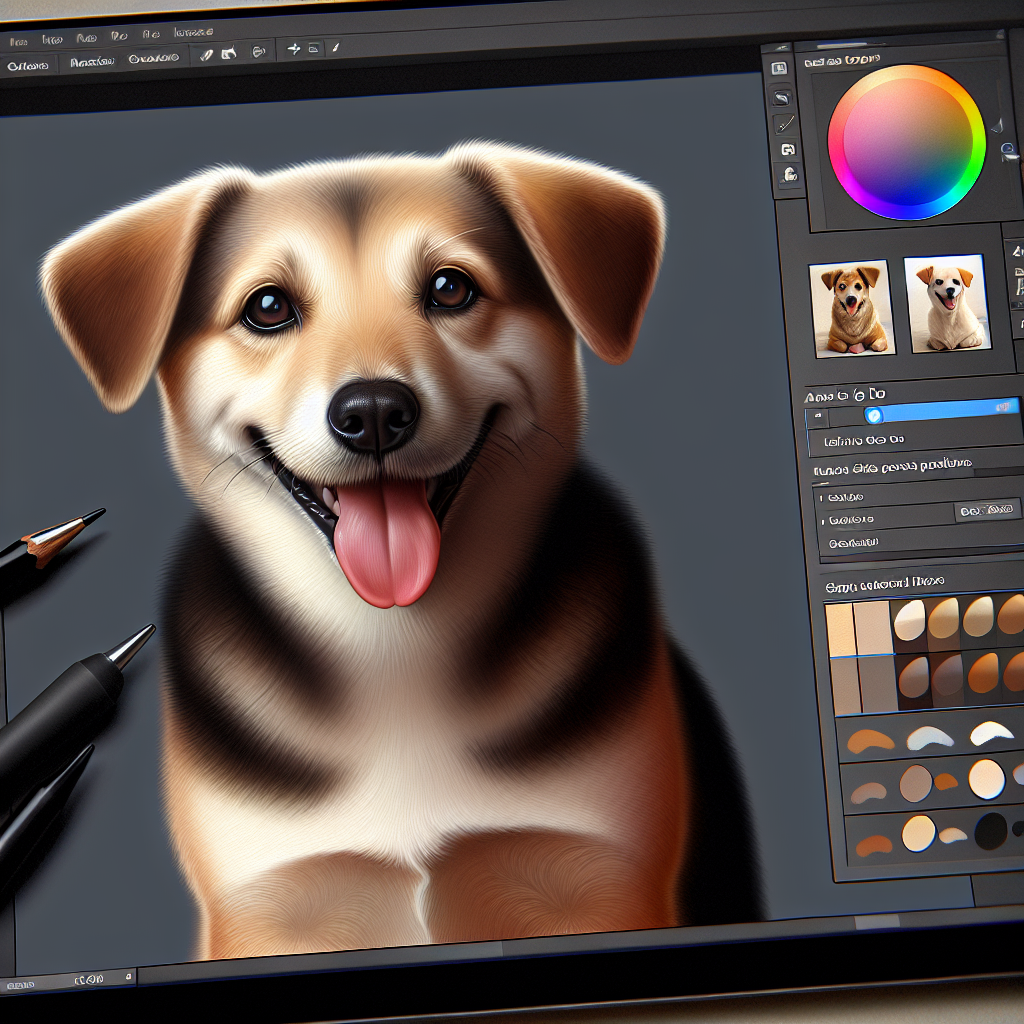Understanding Fleas and Their Impact on Cats

Ah, fleas—those pesky little jumpers that can make your cat’s life miserable. They’re more than just a nuisance. Fleas can cause a world of trouble for your furry friend. Trust me, after two decades in the pet biz, I’ve seen the chaos these tiny critters can unleash.
Fleas are like those uninvited guests who eat all your snacks and never leave. They bite, causing your cat to scratch and itch like mad. This isn’t just annoying; it can lead to skin infections. Plus, some cats are allergic to flea saliva, which makes it even worse. Fleas are also carriers of tapeworms. I mean, can you imagine? One minute you’re minding your own business, the next, you’re a walking buffet for parasites.
But fleas don’t stop there. They can cause anemia in kittens or older cats. If your cat seems lethargic, it’s time to check for fleas. They’re sneaky, hiding in your cat’s fur, but knowing how to check cats for fleas can save you a lot of headaches.
Recognizing the Signs of a Flea Infestation
Spotting a flea infestation isn’t rocket science, but it takes a keen eye. Your cat scratching like it’s auditioning for a dance-off is a big red flag. Other flea infestation symptoms in cats include hair loss, redness, and bumps on the skin. If your cat’s grooming like it’s in a shampoo commercial, that’s another clue.
Grab a white towel or piece of paper, and comb through your cat’s fur. If you see little black specks, that’s flea dirt—flea poop, really. Gross, I know. But it helps you know for sure. If you’re still unsure, give your vet a call. They’ll help confirm whether you’re dealing with fleas or something else.
Preparing Your Home for Flea Treatment
Once you know your cat’s got fleas, it’s time to roll up your sleeves. Getting rid of fleas isn’t just about treating your cat. Your home is now a battleground—flea eggs, larvae, and adults could be anywhere. Preparing your home for cat flea treatment is crucial.
Start by vacuuming everything like you’re on a cleaning spree—carpets, rugs, furniture, and especially your cat’s favorite hangouts. Flea eggs can drop and get cozy in these spots. Wash your cat’s bedding in hot water. If you’ve got baseboards, give them a good sweep. Fleas love dark corners and crevices.
Consider using flea sprays or powders for your home. They’re usually safe, but follow the instructions like your life depends on it. Your cat’s safety comes first. I once met a guy who tried to DIY his own flea solution with disastrous results. Let’s just say it ended with a frantic call to the vet.
The Importance of a Good Flea Comb
Now, let’s talk about a simple but effective tool— the flea comb. It’s like a magic wand for fleas. Using a flea comb for cats helps you physically remove fleas from your cat’s fur. It’s an old-school method, but it works like a charm.
Comb your cat daily, especially during a flea infestation. It’s not just about removing fleas; it’s a bonding time with your pet. Plus, it’s satisfying to see those little creeps caught in the comb. Make sure to dunk the comb in soapy water after each pass. Fleas can jump back on your cat faster than you can say “flea circus.”
Consulting Your Vet for Flea Solutions
Sometimes, you need to call in the experts. Consulting your vet for flea solutions is always a good idea. They’ve got the know-how and the vet-recommended flea treatments for cats that really work. There are pills, topical treatments, and collars. Your vet can guide you to the most effective flea removal for cats.
I remember a lady who came in with her tabby, covered in flea bites. She hadn’t visited a vet yet, thinking she could handle it on her own. After a quick consult, her cat was on the road to recovery. Vets have seen it all. Trust their experience.
And hey, don’t beat yourself up. Fleas happen. You’re doing your best, and that’s what matters. With a bit of effort and the right advice, you can get rid of fleas off your cat and reclaim your peace. Thanks for sticking with me through this flea-ridden tale. Here’s to happy, flea-free pets and less itchy days ahead.
Checking Your Cat for Fleas
Alright, let’s start with the basics—how to inspect a cat for fleas. You might think your cat’s just doing jazz paws with all that scratching, but it’s time for a closer look. So roll up your sleeves, take a deep breath, and let’s get our hands dirty. Fleas are sneaky little devils, hiding in the fur like they’re playing hide and seek. It’s your job to part that fur—channel your inner Moses—and look for those tell-tale signs. Check around the neck, the base of the tail, and behind the ears. These are flea hot spots.
While you’re at it, keep an eye out for flea dirt. Yep, I’m talking about those tiny black specks that look like pepper. Flick some onto a damp paper towel. If it turns reddish-brown, you’ve got yourself some flea poop—congratulations, you’ve got fleas.
But don’t despair. You’re not alone in this battle. Fleas might be tiny, but they’re not invincible. And once you’ve identified the problem, you’re halfway to solving it.
Home Remedies That Actually Work
Now, let’s talk solutions. Not the kind that empty your wallet, but natural flea remedies for cats. Grandma’s got plenty of tips, but not all of them work. You ever try vinegar? It’s not just for salads. A vinegar and water solution can help keep fleas at bay. Spray it lightly on your cat’s fur, avoiding the eyes, and see those fleas flee.
Then there’s the humble lemon. Fleas hate the stuff. Boil a sliced lemon in water, let it steep overnight, and use the liquid as a spray. But remember, don’t overdo it. Cats aren’t fans of citrus, and you don’t want to turn your home into a lemon-scented nightmare.
Some folks swear by diatomaceous earth—it’s like a horror movie for fleas. Sprinkle it on your cat’s bedding and carpets. But here’s the catch: make sure it’s food-grade. You don’t want to turn your house into a health hazard.
When to Call the Vet
Sometimes, though, the home remedies don’t cut it. That’s when you need to call in the pros. If your cat’s scratching like mad, losing fur, or looking downright miserable, it’s time to ring up the vet. These are signs you need a vet for flea infestation. Don’t wait until you’ve got bite marks on your ankles—trust me, it’s not worth it.
Veterinarians have access to treatments that aren’t available over the counter. Plus, they’ll check your cat for any flea-related health issues. Fleas aren’t just annoying—they can cause anemia and transmit tapeworms. So don’t be a hero; sometimes, you’ve got to call in the cavalry and let the vet handle it.
Cleaning Your Home: It’s a Must
Once you’ve tackled the fleas on your cat, it’s time to clean house. And I mean really clean it—like your mother-in-law’s coming over. Fleas don’t just hang out on your pet. They love your carpets, furniture, and even your bed. Cleaning home after fleas is not just a good idea—it’s a must.
Start with a thorough vacuuming. Hit every corner, every crevice. Then toss the vacuum bag or empty the canister outside. Next, wash your cat’s bedding and any other washable fabrics in hot water. If you can, steam clean your carpets. Heat’s a flea’s worst enemy.
Consider using a flea spray or powder for the tougher spots. But remember, safety first. Always read the labels and keep your pets out of the room until everything’s dry.
Keeping Fleas Away for Good
Now let’s talk prevention. Because what’s the point of battling fleas if they’re just gonna come back? Preventing flea infestation in cats is all about consistency. Regular flea treatments are key. Whether it’s a spot-on treatment, a pill, or a collar, find what works for you and stick with it.
But don’t stop there. Home flea prevention tips go a long way. Keep your garden tidy, mow the lawn, and trim the bushes. Fleas love damp, shady places. Make your home as uninviting as possible.
And think long-term flea control for cats. Regular grooming can help you spot fleas before they become a problem. A flea comb is your best friend—use it often and keep those pests in check.
Stick with it, and those fleas won’t stand a chance. You’ve got the tools, you’ve got the know-how, and now it’s time to put it all into action. Be the hero your cat thinks you are. Good luck!
Natural Remedies: Garden Herbs and Kitchen Wonders
Alright, listen up, folks. We’re diving into the flea circus and how to make ’em vanish off your cat. No fancy talk—just the real deal. First off, let’s get into the crunchy side of things with some natural flea remedies for cats. Those garden herbs and kitchen wonders? Yeah, they’re not just for your Sunday roast. Basil, rosemary, and vinegar—these are the unsung heroes in your flea battle.
Basil, that sweet-smelling leaf you throw on pizza, also happens to tell fleas to hit the road. Rosemary’s not just for your lamb chops—it’s a solid flea repeller. Fleas hate its guts. And vinegar, well, it’s the secret weapon. Mix a bit with water, and you’ve got yourself a flea deterrent spray. Who knew your pantry was a flea’s worst nightmare?
Now, I’m not saying you’ll turn your kitchen into an apothecary, but a little DIY never hurt anyone. A sprinkle of this, a dash of that, and you’re on your way to a flea-free cat. Just remember, Rome wasn’t built in a day, and neither is a flea-free kingdom. Patience, dear reader, patience.
How to Clean Your Home: A Flea-Free Fortress
On to the home front—your fortress. Fleas aren’t just chilling on your cat; they’re setting up shop in your home. Time to channel your inner neat freak. Vacuum like it’s an Olympic sport. Seriously, get into those corners and under the couch. The little buggers love hiding in the least expected places.
Wash everything. I’m talking sheets, blankets, the cat’s favorite nap spot—everything. Use hot water; it’s a flea’s worst enemy. You’d be amazed at how household flea control methods can turn the tide in your favor. And while you’re at it, consider steam cleaning. It’s like calling in the cavalry.
Don’t forget flea traps. Sticky traps around the house can catch the sneaky ones trying to make a run for it. And don’t worry, you’re not alone in this. Flea-free home cleaning tips are your trusty sidekick. They help you see the light at the end of the tunnel. A little elbow grease and you’re halfway there.
When to Call the Vet: A Real-Life Lifeline
Sometimes, despite your best efforts, those little pests just won’t quit. That’s when you need a pro—a vet. Knowing the signs to visit the vet for cat fleas is key. If your feline friend’s scratching like it’s going out of style, or if you spot fleas despite your efforts, it’s vet o’clock.
Vets have the know-how and the meds to give both you and your cat peace of mind. It’s not just about getting rid of the fleas; it’s about ensuring your cat’s health. Flea allergies, infections—those are vet territory. And trust me, it’s worth every penny when your furball’s feeling better.
So don’t hesitate. When in doubt, give the vet a shout. A real-life lifeline when those tiny terrors refuse to leave. You’ll both sleep better knowing there’s a plan in place.
Preventing Future Flea Invasions: A Stitch in Time
Prevention—your new best friend. They say an ounce of prevention is worth a pound of cure, and they’re not wrong. This is where you get proactive. Regular checks and treatments—make ’em part of your routine. You’ll thank yourself later.
Prevent fleas on cats naturally by keeping up with those regular flea treatments. It’s not a one-and-done deal. And while you’re at it, consider herbs to repel fleas on cats. Lavender and lemongrass are your friends here. They smell good and give fleas the boot.
Your cat’s favorite spots? Keep those clean and vacuumed. It’s all about staying ahead of the game. A stitch in time truly saves you from a flea-filled future. It’s a marathon, not a sprint, but it’s worth it when you see your cat happy and flea-free.
Your Emotional Support: It’s More Than Just Fleas
Last but not least, let’s talk about the toll fleas take on you and your whiskered companion. It’s more than just bites and itches. The emotional impact of fleas on pets is real. Your cat’s scratching and discomfort can weigh heavy on your heart.
But here’s the thing—it’s about peace of mind and the bond with your furball. Fleas don’t just mess with your cat; they mess with your headspace too. It’s frustrating, sure, but you’re not alone. Every pawrent has been there, and it’s okay to feel overwhelmed.
Remember, you’ve got this. Fleas don’t stand a chance against your newfound wisdom. Thanks for sticking around. You’re doing great. Keep those tails wagging and those fleas fleeing.
Quick Takeaways:
Alright, folks, let’s cut to the chase on how to get rid of fleas off your cat. First things first, figure out if your cat’s got fleas. Look for flea infestation symptoms in cats—itching, red spots, and maybe even some weird behavior. You know your cat better than anyone, so trust your gut. Grab a flea comb and go to town on that fur. If you get a bunch of tiny black dots, congrats—those are flea droppings. Time to act.
Now, about treating your home. It’s not just about the cat—it’s about the whole dang house. Vacuum like you mean it, wash everything, and make sure you’re ready before diving into the flea treatment. You don’t want to half-bake this. A vet-recommended flea treatment for cats can be your best friend here, but don’t forget to check the pantry for some natural remedies. Sometimes vinegar is all it takes.
And prevention? Oh boy, that’s your golden ticket. Regular checks and a flea comb session every now and then keep those pesky bugs at bay. Trust me, a little effort goes a long way.
FAQs:
1.
How do I check my cat for fleas?
Checking cats for fleas isn’t rocket science. Grab a flea comb and part the fur. Look for tiny black specks—flea dirt. If you see your cat scratching like it’s hosting a flea rave, that’s another sign your cat has fleas. Don’t wait for an invitation—get those combs out and start searching.
2.
What are some natural flea remedies for cats?
If you’re looking to ditch the chemicals, you’ve got options. Vinegar is a classic choice. Mix it with water and give your cat a gentle rubdown. Some folks swear by lemon solutions or herbal remedies like rosemary and basil. Just remember, natural doesn’t mean “do nothing.” Keep checking and treating regularly.
3.
When should I take my cat to the vet for a flea infestation?
If your cat’s been scratching to the high heavens and you’ve tried every trick in the book, it’s time to call in the pros. Vet-recommended flea treatments for cats can offer that extra oomph you need. Plus, vets can spot other issues that might be hiding behind those fleas.
4.
How should I clean my home after finding fleas on my cat?
Once the cat’s clear, it’s time to tackle the house. Vacuum every nook and cranny. Wash beddings, curtains—heck, even things you forgot you owned. Fleas are like bad houseguests; they leave a mess. Cleaning home after fleas is crucial—don’t skip this step.
5.
How can I prevent a flea infestation in cats long-term?
For long-term flea control for cats, consistency is key. Regular flea comb checks and maintaining a clean home are your frontline defenses. Use vet-recommended treatments as needed, and keep an eye on flea infestation symptoms in cats. Preparation beats panic every time.
Conclusion:
So, you’ve made it to the end of this flea saga. Getting rid of fleas off your cat is no walk in the park, but hey, you’ve got the tools now. Think of it as a battle—one where you and your cat come out on top. Check your cat often, stay on top of home cleaning, and don’t shy away from calling the vet when needed. You’re not alone in this flea circus.
Remember, it’s not just about removing fleas; it’s about keeping them away for good. A little vigilance goes a long way, and your cat will thank you for it—probably with a purr or two. So, go on, be the hero your cat already thinks you are. Thanks for sticking around. You’ve got this, and your cat’s got you.
References:
1. [PetMD – How to Get Rid of Fleas on Cats](https://www.petmd.com/cat/how-get-rid-fleas-cats)
2. [WebMD – Remove Fleas from Your Pet](https://www.webmd.com/pets/remove-fleas-from-pet)
3. [RSPCA – Flea Treatments and Advice](https://www.rspca.org.uk/adviceandwelfare/pets/general/fleas)
4. [Good Housekeeping – How to Get Rid of Fleas on Cats](https://www.goodhousekeeping.com/life/pets/a27199208/how-to-get-rid-of-fleas-on-cats/)
5. [Petsmart – How to Get Rid of Cat Fleas and Keep Them Away](https://www.petsmart.com/learning-center/cat-care/how-to-get-rid-of-cat-fleas-and-keep-them-away/A0130.html)
Our solution eradicates fleas on contact without harmful chemicals, ensuring a safe environment for your pets and family. Easy to use and highly effective, SayByeBugs helps you maintain a flea-free home. Learn more and order today at SayByeBugs.com
Our solution eradicates fleas on contact without harmful chemicals, ensuring a safe environment for your pets and family. Easy to use and highly effective, SayByeBugs helps you maintain a flea-free home. Learn more and order today at SayByeBugs.com








